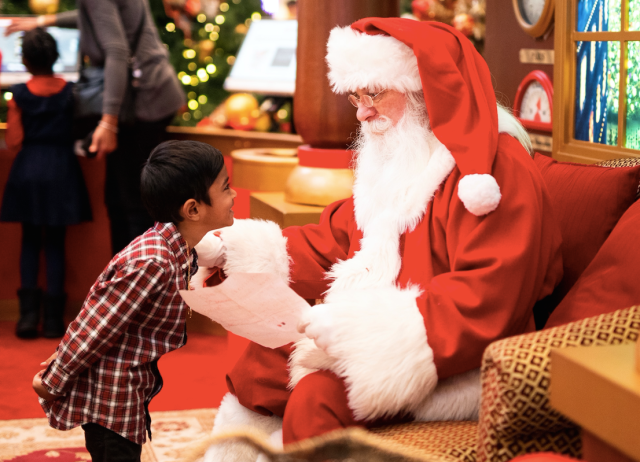The holiday season is a time when you can have lots of fun with your family and friends, meet new people, have a get-together, and go shopping. While this time of year is fun for many, it can also be a stressful time for individuals with Autism Spectrum Disorder and their families. The good news is there are things you can do to decrease the stress level for your family and hopefully have fun too!
Common Holiday Stressors
While every child and adult with Autism is different, there are some common stressors the holiday season presents for those on the spectrum. These could be shopping, receiving gifts, being around less familiar family or family friends, waiting in line to take pictures with Santa, or being expected to be social at events. Other common stressors can be the simple schedule changes that take place during holidays, like no school or longer time away from home, canceled therapy appointments, traveling, different bedtimes or disruption of daily routines. With that in mind, here are 7 tips that might help prevent behaviors of concern and help everyone have and enjoy a happy holiday season!
1. The Premack Principle. (also known as “grandma’s rule”). The parent uses statements that list the order of events using “First ….then….”. This strategy seems to work well most of the time. Example: Mom wants a picture with Santa and all the kids at the mall. She tells the kids, “1st take a picture with Santa, then we can go ride the carousel”. This works because it clearly defines what behavior the child needs to do (take a picture with Santa), before getting to do what they want (ride carousel).
2. Visual or Written Schedules. Another prevention strategy would be to make a visual or written schedule for the day and tell the child what their day is going to be like. Since accepting or tolerating changes in routines can be difficult for children on the spectrum, it is helpful to provide a visual of the activities lined up for them that day. It might be important to let your child know when they will have downtime or time with preferred activities in the schedule as well.
3. Social Stories. Making social stories for different situations and reading it ahead of time helps your child to prepare themselves for the upcoming situation.
4. Sensory Preparedness. The holidays are full of noisy places, music, lights, and smells. If you are planning to go somewhere loud, like a party with music or a crowded shopping mall, plan to take headphones for your child if they do not tolerate loud noises or music. If you are going to a family or friend’s home, you can ask the host if it’s possible to have a quiet space or room or if they are willing to reduce the music or television sounds. Plan to bring your child’s sensory calming tools or items (preferred clothes, blankets, toys) and be sure to periodically provide sensory breaks.
5. Get Ahead of the Shopping Rush. Plan to shop ahead of time to avoid last-minute shopping trips, or even better, shopping online is a great way to avoid the big crowd and the long lines during the holiday season.
6. A picture with Santa. There are a couple of things that can be done to avoid anxiety. The hustle and bustle of the holiday season is not the best thing for the children on the spectrum. Many malls in America have set aside a special time and days for families who want to have a calm encounter and visit with Santa (search for sensory Santa in your area). These are usually a free event, but there are limited tickets or times to reserve, so be sure to plan ahead. The other thing that some malls provide is to schedule an appointment online instead of waiting in line for the picture.
7. Receiving Gifts. Know what your child wants as a gift and notifying your close family and friends know about it in advance is a great way to prevent some uncomfortable situations. Opening a gift which your child doesn’t like might create a situation that is uncomfortable for your child and your family or friends. This is something that can be easily avoided if everyone is prepared. You can also prepare the gift givers ahead of time that your child shows gratitude in different ways. You can take a picture of your child interacting with the toy later to send as a “thank you” if your child isn’t able to show excitement at the moment of opening the gift.
These are just some strategies that may work for your child and family to navigate the holiday season. Visit www.gbcaba.com for tips like this and more.











